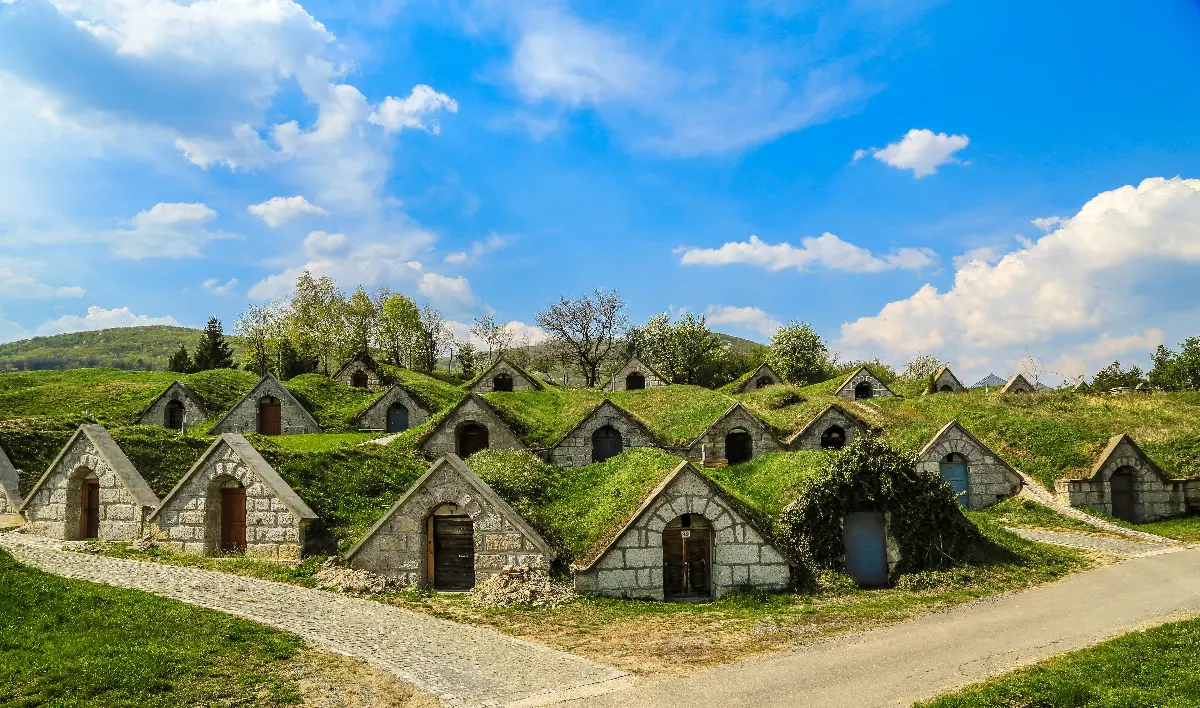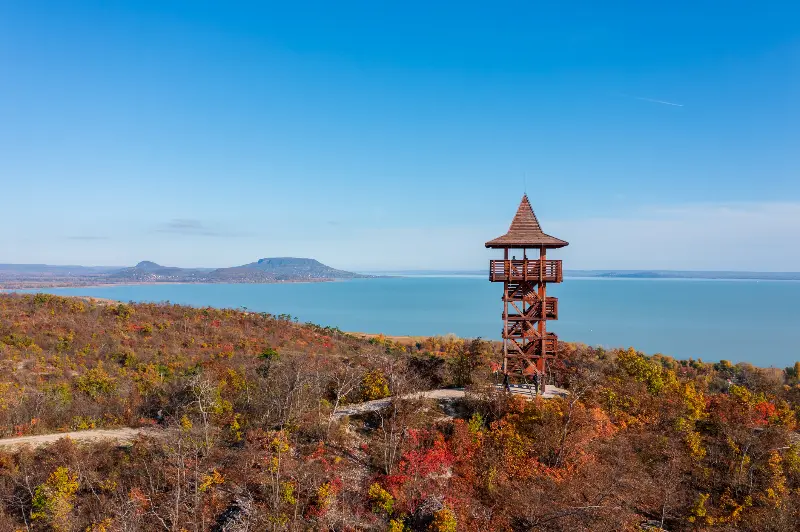
Helyszín címkék:
The most beautiful cellars around Tokaj
Ripka Gergely
Cellars in Hercegkút
The statement above is particularly true of Hercegkút as the 80 cellars and their triangular carved stone entrances have become a symbol of the World Heritage landscape. Just go to Instagram and search for Tokaj: the first 4-5 photos will surely be a drone photo of the Gomboshegy Cellar, in twilight colours. Few people know that the “multi-level” Kőporos cellars located at the other end of the Swabian settlement (Traudsondorf) are just as beautiful and spectacular as those on Gombos Hill. (It is also worth stopping by Calvary Hill when visiting.) This is what it looks like in Borsod-Abaúj-Zemplén County when the land is owned by the local community: the whole environment is kept in perfect order. (Walking along Petőfi Sándor street, one can notice that the cellars are marked in the village, Gomboshegyi is closer to the main road 37.)

World heritage cellars in Tolcsva
The name of Tolcsva usually recalls the larger wineries of the region, but if you drive through the village, there are signs on the main road for the World Heritage cellar row, where you can even admire the magnificent entrances of centuries-old, carved-out, deep cellars in their original state. Noble families such as the Szirmay and Waldbott families had estates here. There are also a number of cellars in Arany János and Ady Endre street. Tolcsva used to be famous for the fact that all the locals had their his own vineyard. A number of smaller family cellars have appeared nowadays, the Szirmay-Waldbott Castle, the Helia-D Herba Castle and the Wine Museum are unique attractions, and it is also worth going for a walk up to the Petrács or Kincsem vineyards in the area in fine weather.
Cellars in Abaújszántó
It is an old saying that Hegyalja ranges from Sátor Hill (in Abaújszántó) to Sátor Hill (in Újhely). Although it was an important stop on the Wine Route, Abaújszántó once belonged to Abaúj and not Zemplén County, and after Encs became the centre of the district, Abaújszántó became an undeservedly neglected town, whose romanticism, shabby charm and winding main street are all truly lovable. It once even had its own spa. Yet there is no better proof of its former prestige in the region, and in fact, the country, that the rich farming town has a large winery comprised of approximately 450 cellars, which is visible from the road to Tállya. But there are also smaller coherent systems along with the White Hill and around the Jewish cemetery. As one enters the village from Tállya, they are immediately greeted by the sight of the old cellar doors on the right-hand side, showing that the village is also a part of the wine region with a long history. However, the loveliest cellars can be reached via the main road 39 through Táncsics köz in the centre of the village, where there is a large area of cellar entrances.

Sátoraljaújhely: Cellars in Zsólyomka and Ungvár
Based on its recent history, Újhely is more of an industrial town among the 27 settlements of the wine region and is also an important historical and cultural centre (just think of the archives where Ferenc Kazinczy worked, or walk along the main street in the town centre and you can see evidence of the former grand bourgeois lifestyle). The cellars are further proof of this, where they produced the fine wines of Hegyalja (unfortunately, there are currently few listed wineries in the town). The cellars of Zsólyomka, separated by a mountain stream, are real hidden beauties lying under the high hills of Zemplén, while the cellars of Ungvár, renovated recently, are multi-storey cellar systems built by monks of the Pauline Fathers in the late 1200s, making it one of the oldest built heritage sites of the area. The entire labyrinth is more than 10 km long, sprawling across a five-acre region. No other municipality in Hegyalja has such an extensive network of cellars concentrated in such a small area. The cellars of Újhely are also worthy of exploration.






